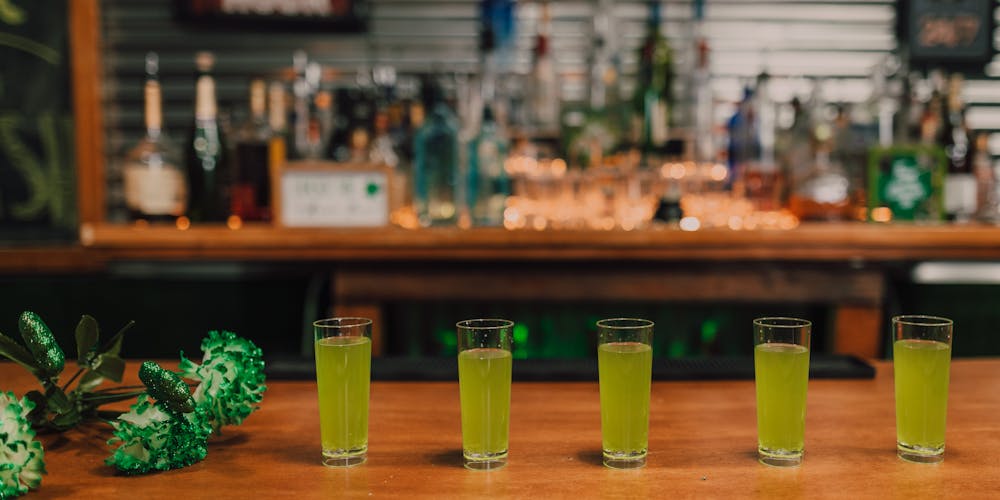Celebrated every March 17th, St. Patrick’s Day has evolved from a solemn religious observance into a worldwide cultural phenomenon. One of the most recognizable aspects of this celebration is the custom of drinking green beer, which prompts the question: why do we drink green beer on St Patrick’s Day? This article explores the rich history behind this tradition, its significance within Irish culture, and how it has become a global favorite.
The Origins of St. Patrick’s Day
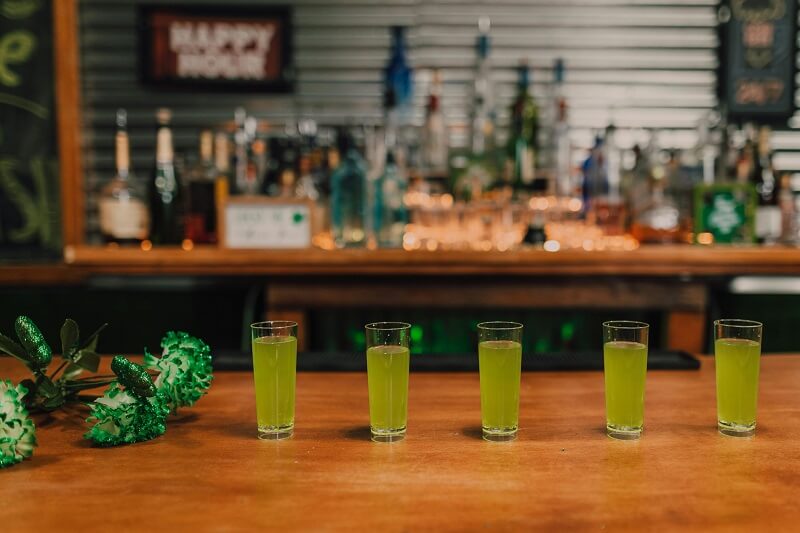
To understand why green beer is consumed during St. Patrick’s Day, we must first delve into the holiday’s origins. St. Patrick’s Day commemorates St. Patrick, the patron saint of Ireland, who played a crucial role in converting the Irish to Christianity.
St. Patrick: The Patron Saint of Ireland
St. Patrick is a central figure in Irish history. Born in Roman Britain in the late 4th century, he was kidnapped by Irish raiders at age sixteen and taken to Ireland as a slave. After six years, he escaped and returned home, only to feel called back to Ireland to spread Christianity.
His life story is filled with legends, including the famous tale of him driving snakes out of Ireland. While that may be more myth than fact, his impact on Irish society is undeniable. St. Patrick’s efforts led to the establishment of monasteries, churches, and schools throughout Ireland, cementing his legacy. Today, he is celebrated not just for his religious contributions but also as a symbol of Irish identity and culture.
From Religious Holiday to Global Celebration
Originally observed as a solemn feast day in the Catholic Church, St. Patrick’s Day was marked by attending church services. However, as Irish immigrants began to leave their homeland, particularly during the Great Famine of the 1840s, they brought their traditions with them.
In countries like the United States, the day transformed into a vibrant celebration of Irish culture, leading to parades, music, and ultimately, drinking. As people sought ways to connect with their ancestry, the day became synonymous with revelry and joy. Thus, what started as a religious observance gradually morphed into a global festival celebrating all things Irish—especially beer.
The Role of Beer in St. Patrick’s Day Celebrations
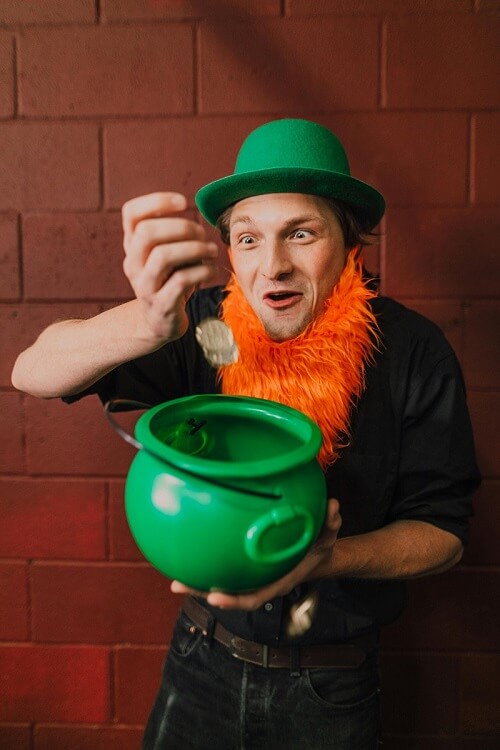
Beer holds a special place in Irish culture. Given its historical significance, it’s no wonder that it plays a vital role in the festivities surrounding St. Patrick’s Day.
Ireland’s Beer Heritage
Beer has been a part of Irish culture for centuries, with brewing dating back to ancient times. The importance of beer is reflected in various aspects of Irish life—it accompanies gatherings, celebrations, and even everyday meals.
One of the most iconic beers associated with Ireland is Guinness. Founded in 1759, the stout has become a symbol of Irish brewing excellence. With its dark color, creamy texture, and distinctive taste, Guinness is often seen as a staple beverage during St. Patrick’s Day celebrations. It is not only a drink but also an integral part of Irish identity, intertwined with countless stories and traditions.
Beer and Irish Immigration
The journey of Irish immigrants to America significantly impacted beer-drinking customs. Faced with hardships in their new homeland, Irish communities found solace and camaraderie in pubs, where they could share their stories and maintain their cultural roots. Here, beer became a social lubricant, enabling the sharing of experiences and fostering connections among immigrants.
As St. Patrick’s Day grew in popularity, so did the consumption of beer, particularly in cities with large Irish populations. Pubs across the United States began hosting lively celebrations featuring traditional Irish music, dance, and, of course, beer. This evolution helped solidify beer as an essential component of the holiday.
The History of Green Beer
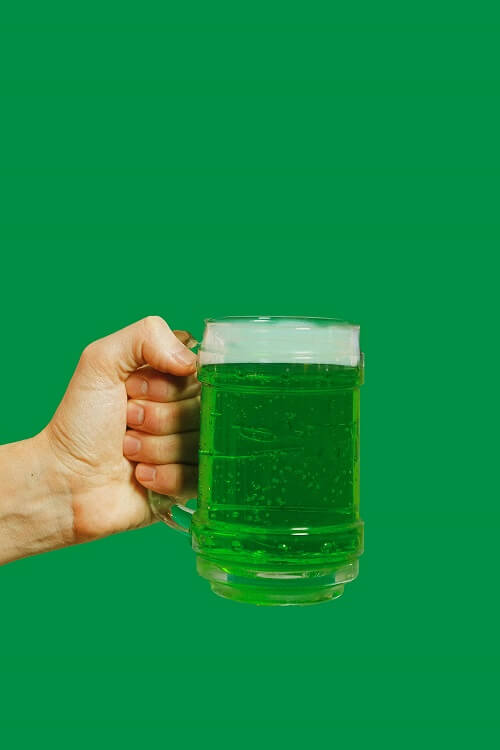
Green beer might seem like a frivolous addition to St. Patrick’s Day, but it holds a unique place in the history of the holiday. Understanding how green beer came to represent St. Patrick’s Day illuminates its broader significance.
The Invention of Green Beer
The concept of green beer is credited to Dr. Thomas Curtin, a New York City-based beer enthusiast and bartender in the early 20th century. As St. Patrick’s Day celebrations grew in scale and enthusiasm, Curtin sought a way to make the drinks match the festive spirit of the holiday.
He experimented with using food dye to tint the light-colored beer a vibrant green. The initial response was overwhelmingly positive, and soon bars began serving green beer as a novelty item during the festivities. This innovation sparked interest and curiosity, leading to widespread adoption of green beer in pubs across the country.
How Green Beer Became a Tradition
Once introduced, green beer quickly garnered popularity, evolving into a staple of St. Patrick’s Day celebrations. Bars began promoting the drink heavily, making it a signature offering during the holiday.
This trend transcended the borders of the United States, spreading to other countries as Irish expatriates celebrated their heritage. Today, green beer is served in pubs, restaurants, and homes worldwide, becoming a symbol of festivity and celebration on St. Patrick’s Day.
How Green Beer Is Made
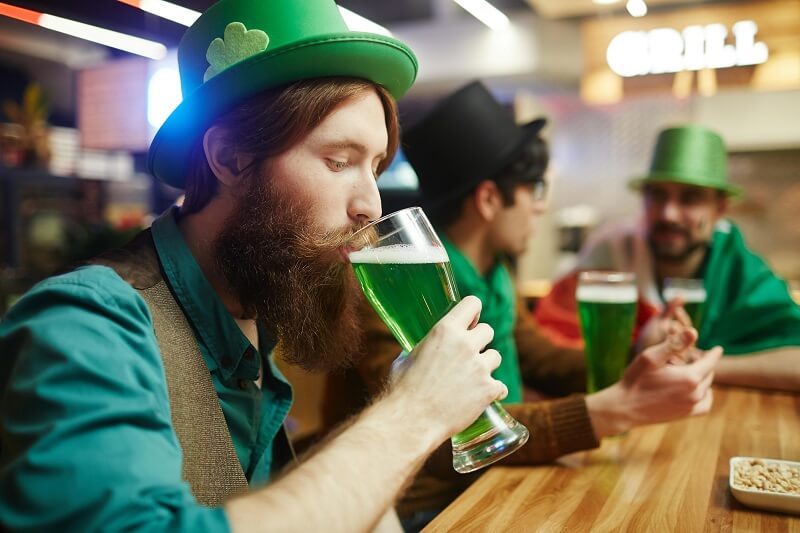
Curious about creating your own green beer? It’s surprisingly easy, and there are various methods to achieve that eye-catching hue.
Using Artificial Coloring
The most common method involves adding green food dye to light-colored beers. Bartenders typically start with a standard lager or pale ale and then mix in a few drops of dye until the desired shade of green is achieved.
While this method is simple and effective, it can raise concerns about the health implications of consuming artificial coloring. Nevertheless, the visual appeal of green beer makes it a crowd-pleaser during the festivities.
Natural Alternatives to Food Dye
For those who prefer to avoid artificial ingredients, there are natural alternatives to create green beer. Ingredients such as spinach or spirulina can be blended into the beer to achieve a green hue.
While these methods may require a bit more effort, they offer a healthier and environmentally friendly option without compromising on the festive spirit. Experimenting with different natural ingredients can lead to unique flavors and variations, further enriching the experience of celebrating St. Patrick’s Day.
Green Beer in Modern Celebrations
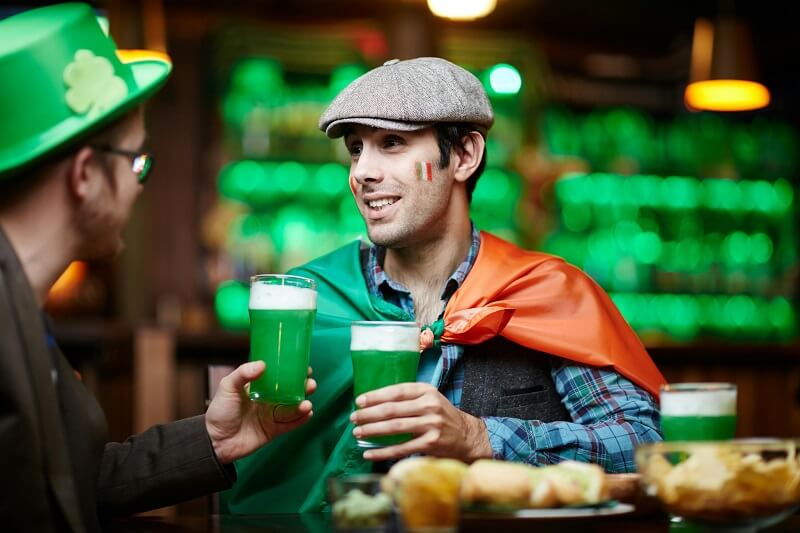
Today, green beer occupies a prominent place in contemporary St. Patrick’s Day festivities, reflecting both tradition and innovation.
Celebrations in the United States
In the U.S., St. Patrick’s Day has become a massive celebration, with cities hosting elaborate parades, parties, and events. Green beer has become a ubiquitous sight across bars and restaurants, with many establishments offering special promotions to attract patrons.
During these celebrations, people come together to enjoy live music, dance, and, of course, clink glasses filled with frothy green beer. The atmosphere is electric, characterized by laughter, camaraderie, and the joyous celebration of Irish culture.
Celebrations Around the World
The influence of Irish culture extends beyond the U.S., with green beer being embraced in various countries around the globe. From Australia to Canada, local pubs and communities have adopted this quirky tradition, often incorporating their unique twists.
In some places, special festivals center around St. Patrick’s Day, showcasing the spirit of Ireland through music, dance, and of course, beer. These international celebrations highlight the global affinity for Irish culture and the universal joy of coming together to celebrate.
Criticism and Controversies Surrounding Green Beer
While green beer is often viewed as fun and festive, it also faces criticism and controversies that merit consideration.
Cultural Appropriation Concerns
Some critics argue that the commercialization of St. Patrick’s Day, exemplified by the consumption of green beer, amounts to cultural appropriation. They express concern that the holiday has been stripped of its original meaning, reducing it to a marketing opportunity rather than honoring its roots.
These criticisms point to the importance of recognizing and respecting the depth of Irish culture, which goes far beyond the playful traditions adopted by others. Understanding the historical significance of St. Patrick’s Day can foster greater appreciation for the holiday and encourage more meaningful celebrations.
Health and Environmental Issues
Another area of concern revolves around the use of artificial food coloring in green beer. Studies suggest potential health risks associated with certain food dyes, prompting discussions about the safety of consuming artificially colored beverages.
Moreover, the environmental impact of mass-producing dyed beers raises questions about sustainability and responsible consumption. Consumers are increasingly seeking out organic and locally sourced options, urging producers to adopt practices aligned with environmental stewardship.
Fun Facts About Green Beer and St. Patrick’s Day
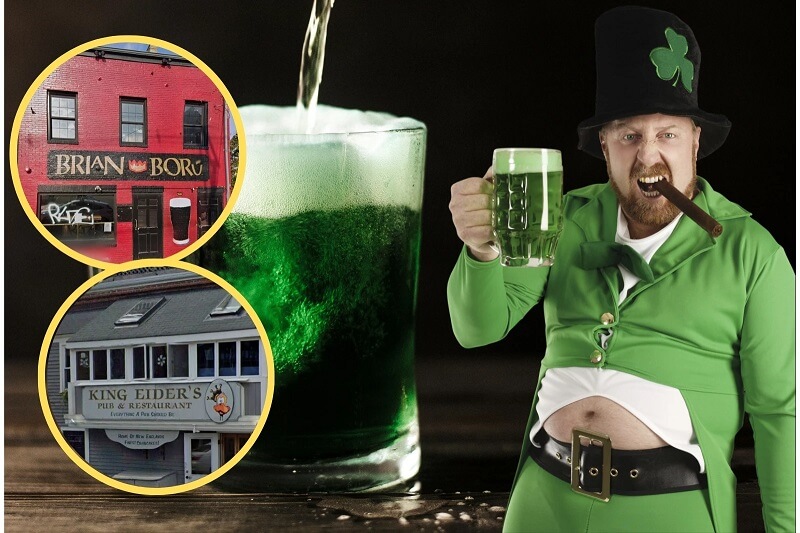
Exploring the lighter side of the holiday reveals some intriguing facts about green beer and St. Patrick’s Day.
Guinness and Its Role in Celebrations
Guinness is perhaps one of the most recognized names associated with Irish beer, particularly on St. Patrick’s Day. The brand has cleverly marketed itself over the years, often featuring creative campaigns that celebrate Irish culture and the spirit of the holiday.
With its deep roots in Irish history, Guinness has become not only a staple at St. Patrick’s Day celebrations but also a beloved icon of Ireland itself. Many pub-goers opt for a pint of Guinness over green beer, preferring the authentic taste of Irish stout on this festive occasion.
Record-Breaking Green Beer Events
St. Patrick’s Day has witnessed numerous record-breaking events centered around green beer. From the largest gathering of people dressed in green to the longest bar crawl involving green beer, these events demonstrate the spirit of competition and fun surrounding the holiday.
Such records not only showcase the enthusiasm for the holiday but also bring communities together, fostering a sense of belonging and shared experience. They remind us that St. Patrick’s Day is not just about drinking; it’s about celebrating heritage, unity, and joy.
How to Celebrate St. Patrick’s Day Responsibly
As we engage in the festivities, it’s crucial to approach St. Patrick’s Day responsibly to ensure a safe and respectful celebration.
Drink Moderately
When enjoying green beer and other beverages, moderation is key. It’s important to pace oneself and remain aware of personal limits.
Consider opting for lower-alcohol options or alternating between alcoholic and non-alcoholic drinks. Staying hydrated and eating properly can also help mitigate any adverse effects of alcohol consumption, allowing everyone to enjoy the celebrations fully.
Support Local Breweries
In the spirit of celebration, consider supporting local breweries or authentic Irish brands instead of generic options. This not only enhances the quality of your drinks but also contributes to local economies and fosters a sense of community.
By exploring unique brews and discovering new flavors, you can enhance your celebration while embracing the essence of St. Patrick’s Day.
FAQs About Green Beer and St. Patrick’s Day
Why do we drink green beer on st patrick’s day?
Beer has long been intertwined with Irish culture, making it a fitting choice for St. Patrick’s Day celebrations. Historically, beer has served as a social lubricant, facilitating connections among friends and family.
Additionally, the holiday’s transformation from a solemn observance to a festive celebration coincided with the rise of beer-drinking traditions, particularly among Irish immigrants. As such, beer has become a cherished element of the festivities.
How do you make green beer at home?
Creating your own green beer at home is simple! Begin with a light-colored beer, such as a lager or wheat beer. Add a few drops of green food dye into the glass and stir gently until the desired color is achieved.
Alternatively, for a natural twist, consider blending in spinach juice or powdered spirulina. Experimenting with different approaches can yield fun results and make for a memorable St. Patrick’s Day experience.
Conclusion
The tradition of drinking green beer on St. Patrick’s Day encompasses a rich tapestry of history, culture, and celebration. From its origins tied to St. Patrick himself to its evolution into a global phenomenon, green beer has become emblematic of the holiday.
While enjoying this festive drink, it’s essential to recognize its significance within the broader context of Irish culture and the spirited nature of celebration. As we raise our glasses on March 17th, let us remember the legacy of St. Patrick and the countless individuals who have contributed to the vibrant tapestry of Irish identity. Whether you’re sipping a classic pint of Guinness or indulging in a frosty green ale, drink responsibly and honor the spirit of the holiday.

